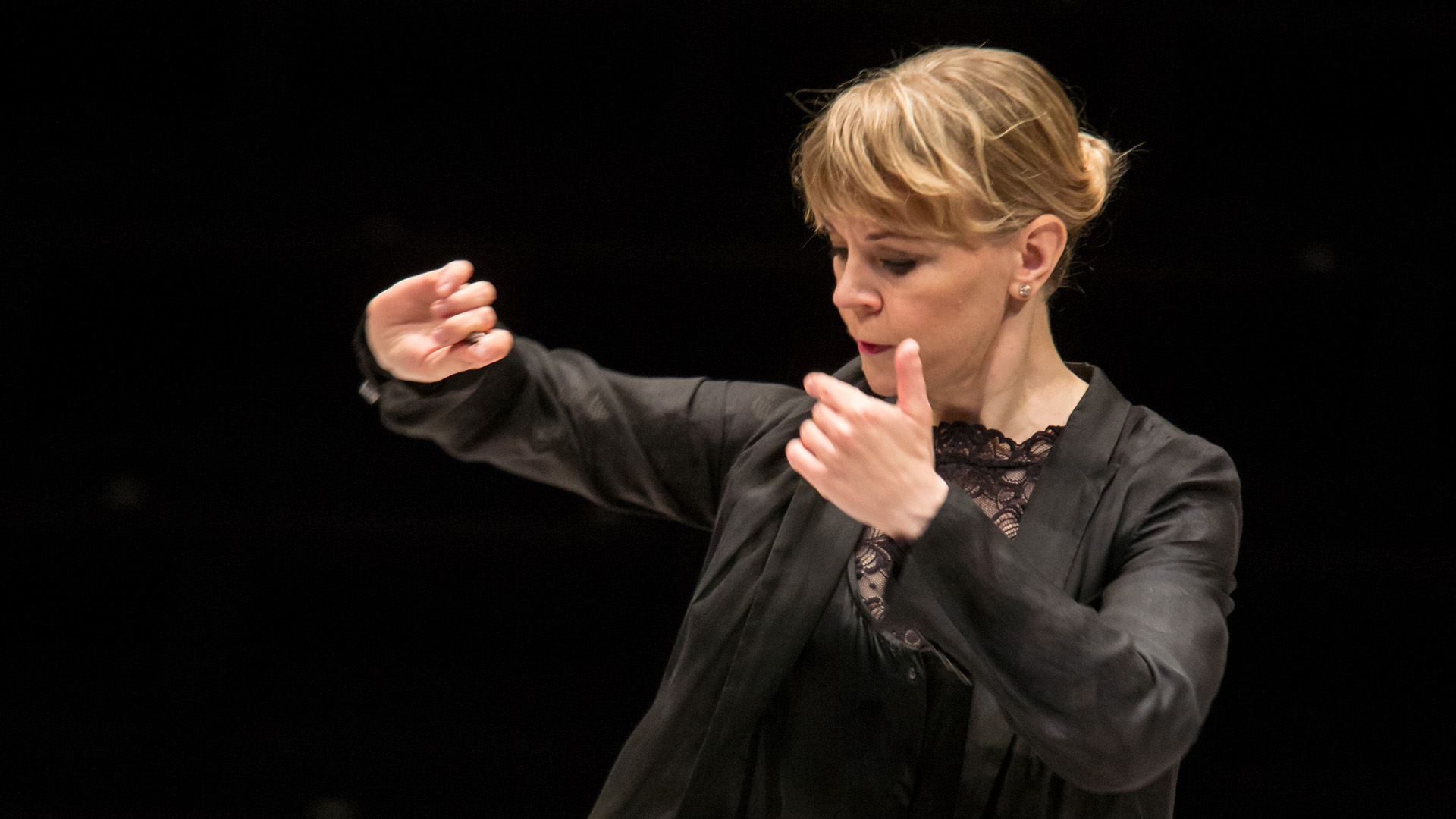Mahler's symphonies are a musical tasting menu made from all kinds of ingredients, an endless cavalcade of dishes in which the five basic tastes – sweet, sour, salty, bitter, and umami – blend in both familiar and strange ways without forgetting a visit to a Viennese café for Sacher cake or a country market for sausages. In Mahler's Seventh Symphony, Arnold Schönberg sensed the same steady attraction that guides the planets yet allows them to travel peacefully in their own paths.
Susanna Mälkki
Chief Conductor of the Helsinki Philharmonic Orchestra since 2016 and Principal Guest Conductor of the Los Angeles Philharmonic since 2017, Susanna Mälkki is a regular guest with the world’s most illustrious orchestras and at such opera houses as La Scala, the New York Metropolitan and the Vienna State Opera. From 2006 to 2013 she was Artistic Director of the Ensemble Intercontemporain in Paris on the invitation of Pierre Boulez and has conducted the premieres of works by many of the greatest contemporary composers. Beginning her career as a cellist and winning the Turku Cello Competition in 1994, she spent three years as principal cello in the Gothenburg Symphony Orchestra. Susanna Mälkki is a Chevalier of the Légion d’honneur in France, a Fellow of the Royal Academy of Music in London and a member of the Kungliga Musikaliska Akademien in Stockholm.
https://susannamalkki.com/
Gustav Mahler: Symphony No. 7 "Song of the Night"
For Gustav Mahler (1860–1911), 1904 was one of the happiest times of his life: he was gradually gaining a reputation as a composer and conductor, and his wife had just given birth to their second daughter. Whereas his sixth symphony had been a tragic work ending in three strokes of fate, the seventh (1904/5) promised to mark a transition from darkness to light, from night to morning. But fate was soon to intervene in his private life. His youngest daughter lost her battle with scarlet fever, he was told by his doctor that he had not long to live, and he was obliged to resign from his post as director of the Vienna Court Opera as a consequence of the anti-Semitic fever in the city. He was a broken man.
Whether these set-backs are reflected in the seventh symphony is, however, a matter of conjecture. The symphony does, admittedly, feature some sudden cuts from light to shade and great volatility. Some claim Mahler was inspired by Rembrandt’s painting The Night Watch. The symphony is sometimes known as The Song of the Night because of the two Night Music movements, though Mahler would never have sanctioned this name.
The least often performed of Mahler’s symphonies, and one looked down upon by his contemporaries, the seventh takes its contrasts furthest of all. This applies equally well to the tempos, orchestral timbres and keys. No wonder, therefore, that the great musical revolutionary Arnold Schönberg considered it his best. Restless and enigmatic, and a work of tremendous orchestral effects, it is also considered one of the trickiest to conduct.
In structure, the symphony is more or less symmetrical: two great monoliths framing three character movements. In Mahler’s own words: “Three night pieces; the finale, bright day. As foundation for the whole, the first movement.”

